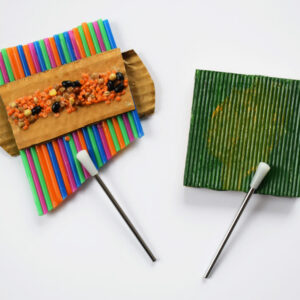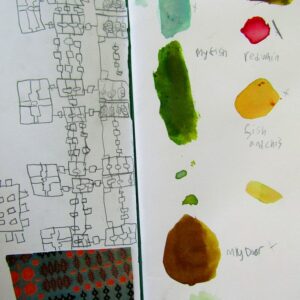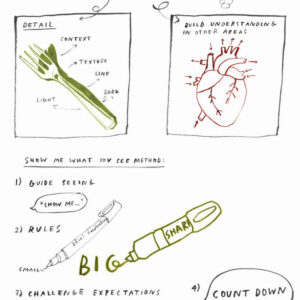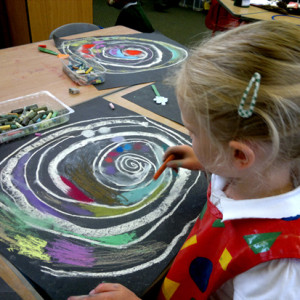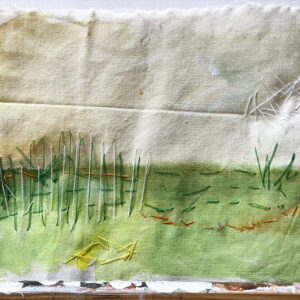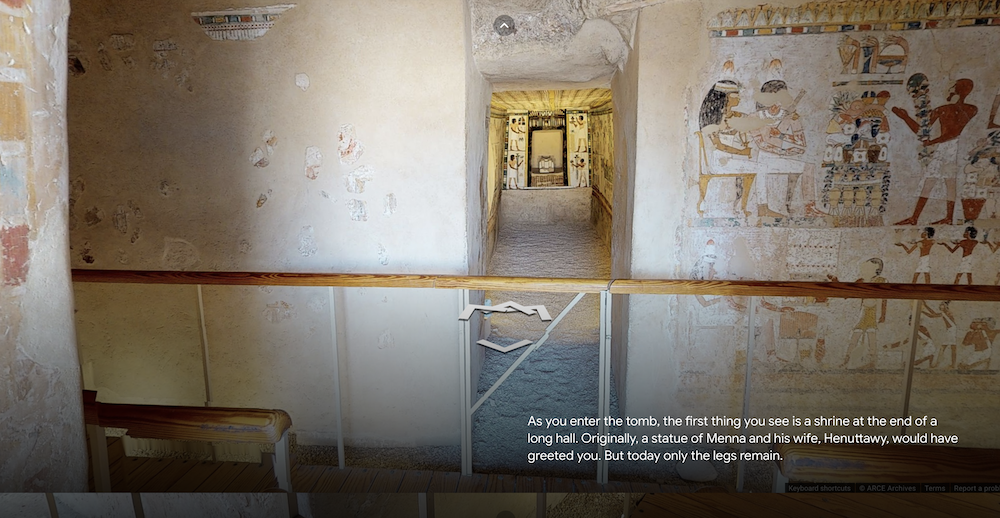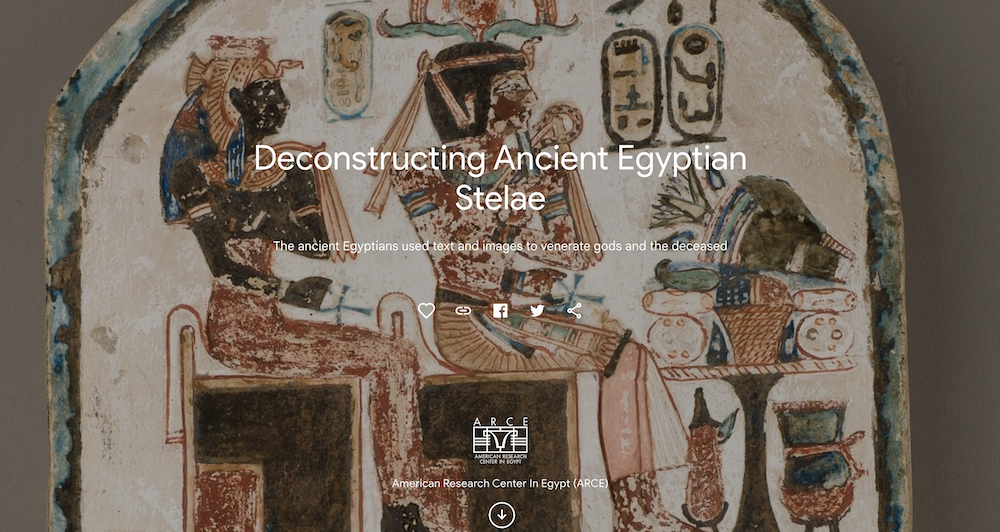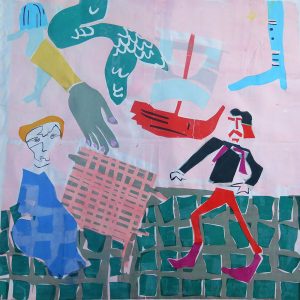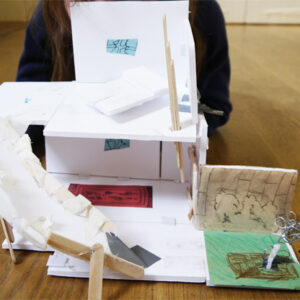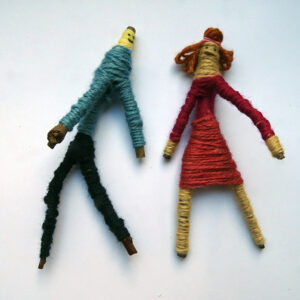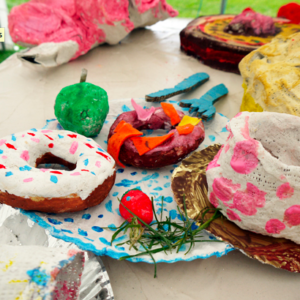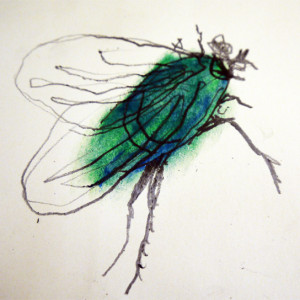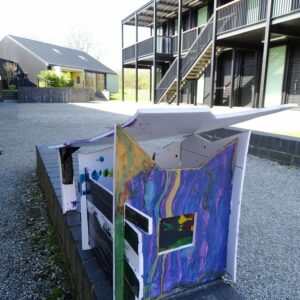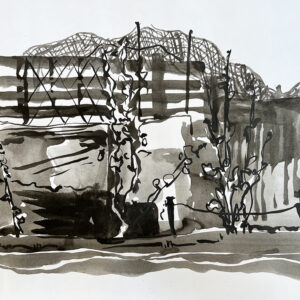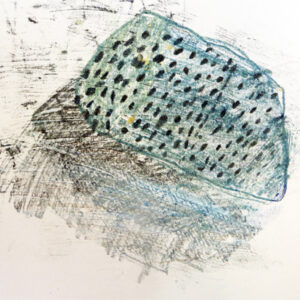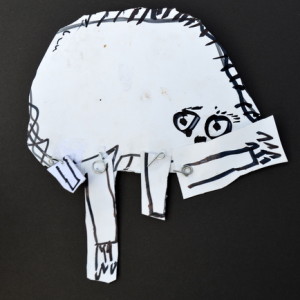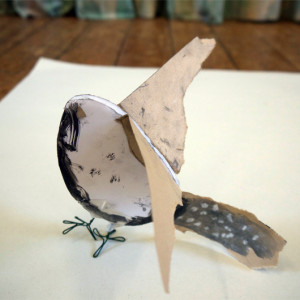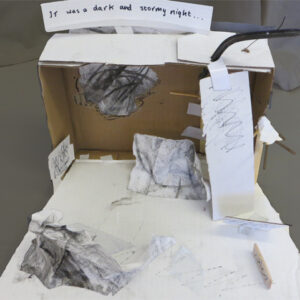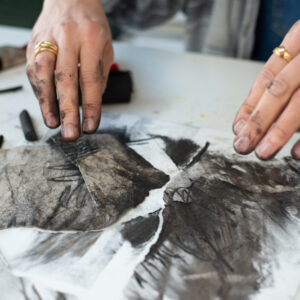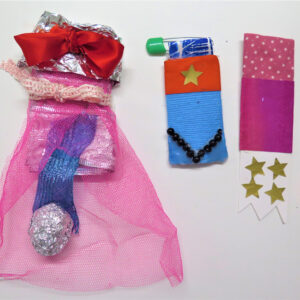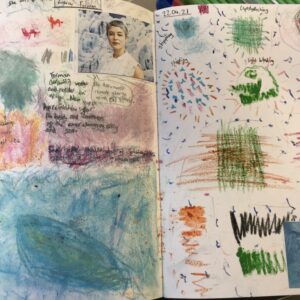Drawing Source Material: Orchestras and Instruments
This Source Material Is Used In…
Drawing Source Material: Shells & Spirals
A collection of imagery and sources which you can use to prompt drawing in schools and community groups.
Please note that this page contains links to external websites and has videos from external websites embedded. At the time of creating, AccessArt checked all links to ensure content is appropriate for teachers to access. However external websites and videos are updated and that is beyond our control.
Please let us know if you find a 404 link, or if you feel content is no longer appropriate.
We strongly recommend as part of good teaching practice that teachers watch all videos and visit all websites before sharing with a class. On occasion there may be elements of a video you would prefer not to show to your class and it is the teacher’s responsibility to ensure content is appropriate. Many thanks.
Shells
Use the films below to enable children to explore drawing shells. Try to create a sense of momentum – for example you might pause the video 4 times and ask the pupils to make a 1 minute, 2 minute, 3 minute and 4 minute drawing at each pause.
Encourage close and slow looking by talking as they draw – use your voice to attract their attention to qualities of the shells.
Try the same exercise using different materials, ie handwriting pen, ink and nib, pastel, watercolour…
Charles Dessalines
![]()
![]()
Anselmus Boëtius de Boodt
![]()
Common Triton Horns, Charonia tritonis (1596-1610) by Anselmus Boëtius de Boodt. Original from the Rijksmuseum.
George Shaw
![]()
Tritonian murex or Sea trumpet illustration from The Naturalist's Miscellany (1789-1813) by George Shaw (1751-1813)
You May Also Like…
Pathway: Spirals
This is featured in the ‘Spirals’ pathway
using sketchbooks to make visual notes
Show me what you see
Drawing Source Material: Moving Water
A collection of imagery and sources which you can use to prompt drawing in schools and community groups.
Please note that this page contains links to external websites and has videos from external websites embedded. At the time of creating, AccessArt checked all links to ensure content is appropriate for teachers to access. However external websites and videos are updated and that is beyond our control.
Please let us know if you find a 404 link, or if you feel content is no longer appropriate.
We strongly recommend as part of good teaching practice that teachers watch all videos and visit all websites before sharing with a class. On occasion there may be elements of a video you would prefer not to show to your class and it is the teacher’s responsibility to ensure content is appropriate. Many thanks.
Water
Use the film below to enable children to explore drawing water. Try to create a sense of momentum – for example you might pause the video 4 times and ask the pupils to make a 1 minute, 2 minute, 3 minute and 4 minute drawing at each pause.
Encourage close and slow looking by talking as they draw – use your voice to attract their attention to qualities of the water.
Try the same exercise using different materials, ie handwriting pen, ink and nib, pastel, watercolour…
This Source Material Features in…
Pathway: Cloth, thread, paint
This is featured in the ‘Cloth, Thread, Paint’ pathway
using sketchbooks to make visual notes
Show me what you see
Drawing Source Material: Egyptian Artefacts
A collection of imagery and sources which you can use to prompt drawing in schools and community groups.
Please note that this page contains links to external websites and has videos from external websites embedded. At the time of creating, AccessArt checked all links to ensure content is appropriate for teachers to access. However external websites and videos are updated and that is beyond our control.
Please let us know if you find a 404 link, or if you feel content is no longer appropriate.
We strongly recommend as part of good teaching practice that teachers watch all videos and visit all websites before sharing with a class. On occasion there may be elements of a video you would prefer not to show to your class and it is the teacher’s responsibility to ensure content is appropriate. Many thanks.
Egyptian Artefacts
Use the film and imagery below to enable children to explore Egyptian artefacts. Try to create a sense of momentum – for example you might pause on an image or the video 4 times and ask the pupils to make a 1 minute, 2 minute, 3 minute and 4 minute drawing at each pause.
Encourage close and slow looking by talking as they draw – use your voice to attract their attention to qualities of the artefacts.
Try the same exercise using different materials, ie handwriting pen, ink and nib, pastel, watercolour…
Explore the collections of Rijksmuseum van Oudheden here.
You can find lots of visual resources on Google Arts and Culture about preserving Egypt’s history.
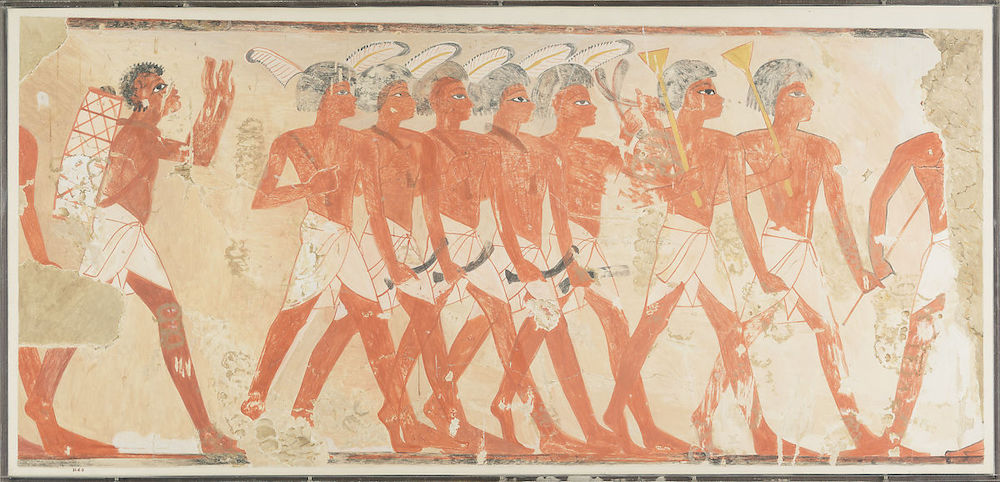
Military Musicians Showing Nubian and Egyptian Styles, Nina de Garis Davies (1881–1965), New Kingdom, Dynasty 18, reign of Thutmose IV, ca. 1400–1390 B.C. From Egypt, Upper Egypt, Thebes, Sheikh Abd el-Qurna, Tomb of Tjeneny (TT 74) Tempera on paper, H. 44.5 × W. 93 cm (17 1/2 × 36 5/8 in.) Rogers Fund, 1931
Watch the clip with the volume off as you guide children’s attention to parts of the paintings
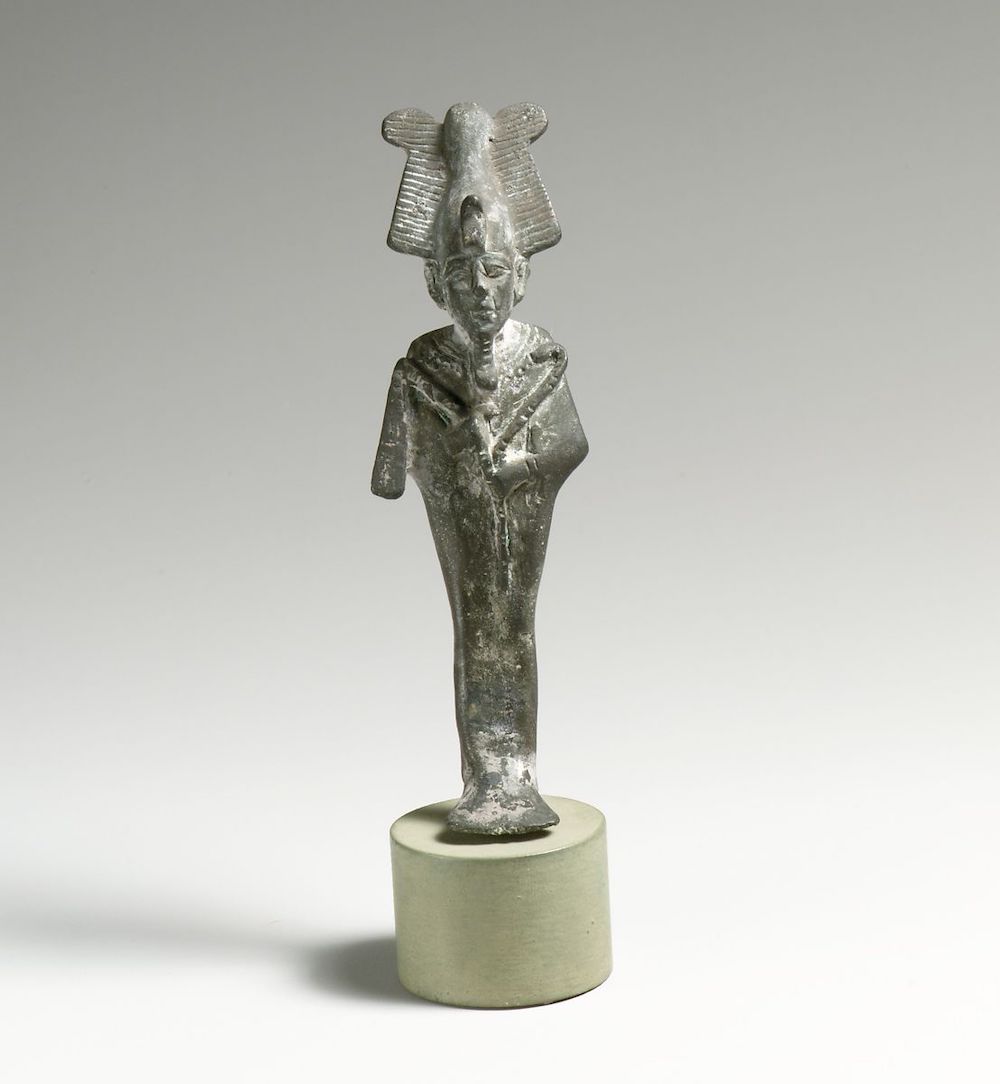
Bronze statuette of Osiris, Late Dynastic-Hellenistic 664–31 B.C. Egyptian Medium: Bronze Dimensions: H. 4 1/2 in. (11.4 cm) The Cesnola Collection, 1874–76
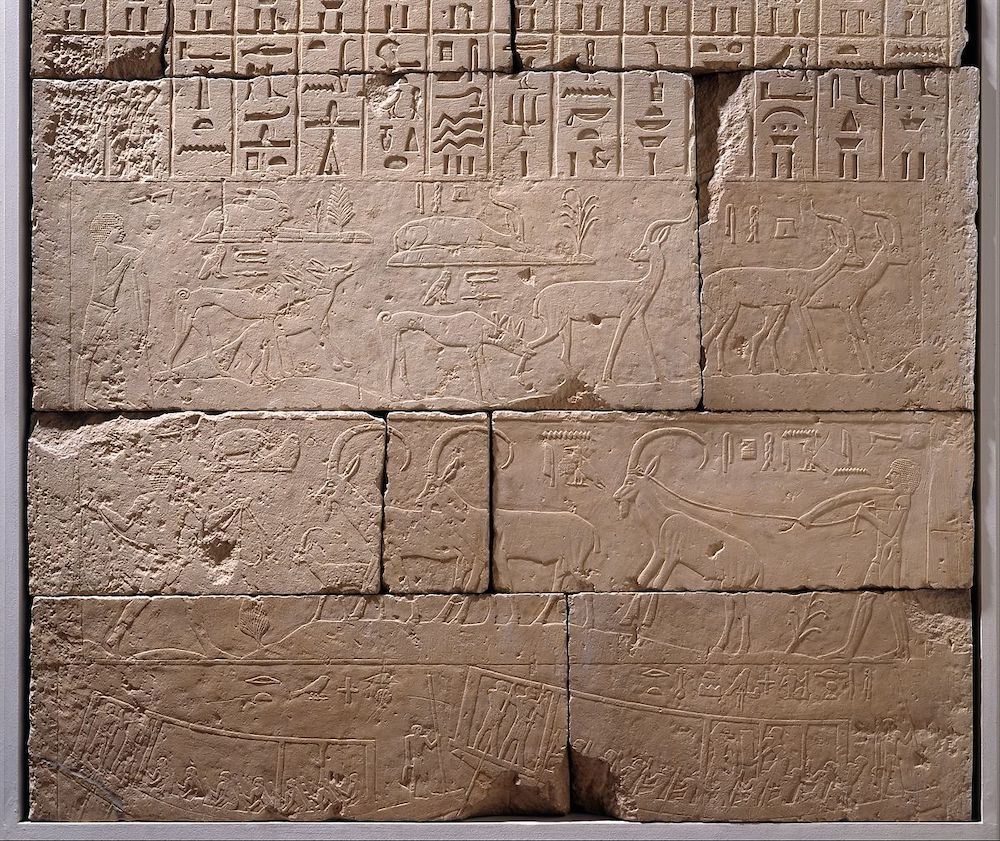
Tomb Chapel of Raemkai: South Wall, Old Kingdom, Dynasty 5, ca. 2446–2389 B.C., From Egypt, Memphite Region, Saqqara, North of the Djoser pyramid complex, Mariette D3, Egyptian Antiquities Service/Quibell excavations, 1907–08, Limestone, paint, Rogers Fund, 1908
Take a virtual tour of the Tomb of Menna on Google Arts and Culture
Deconstructing Ancient Egyptian Stelae on Google Arts and Culture
You May Also Like…
Pathway: working with shape and colour
This is featured in the ‘Working with Shape and Colour’ pathway
using sketchbooks to make visual notes
Show me what you see
Drawing Source Material: Amazing Architectural Homes
A collection of imagery and sources which you can use to prompt drawing in schools and community groups.
Please note that this page contains links to external websites and has videos from external websites embedded. At the time of creating, AccessArt checked all links to ensure content is appropriate for teachers to access. However external websites and videos are updated and that is beyond our control.
Please let us know if you find a 404 link, or if you feel content is no longer appropriate.
We strongly recommend as part of good teaching practice that teachers watch all videos and visit all websites before sharing with a class. On occasion there may be elements of a video you would prefer not to show to your class and it is the teacher’s responsibility to ensure content is appropriate. Many thanks.
This resource is free to access and is not part of AccessArt membership.

Amazing Architectural Homes
Use this collection of films as source material for pupils exploring amazing architectural homes. In the first instance you might want to pause the videos as suitable points to enable the children to carefully look at the main forms and details. Try to create a sense of momentum – for example you might pause the video 4 times and ask the pupils to make a 1 minute, 2 minute, 3 minute and 4 minute drawing at each pause.
Encourage close and slow looking by talking as they draw – use your voice to attract their attention to features of the building.
When pupils are more experienced, you can also try getting them to make their drawings as the videos play – making quick gestural sketches.
You May Also Like…
Pathway: Architecture- Dream big or small?
This is featured in the ‘Architecture: Dream Big or Small?’ pathway
using sketchbooks to make visual notes
Find out how pupils can respond to artists work in sketchbooks
Show me what you see
Enable close looking and drawing with this exercise
Drawing Source Material: Oceans
A collection of imagery and sources which you can use to prompt drawing in schools and community groups.
Please note that this page contains links to external websites and has videos from external websites embedded. At the time of creating, AccessArt checked all links to ensure content is appropriate for teachers to access. However external websites and videos are updated and that is beyond our control.
Please let us know if you find a 404 link, or if you feel content is no longer appropriate.
We strongly recommend as part of good teaching practice that teachers watch all videos and visit all websites before sharing with a class. On occasion there may be elements of a video you would prefer not to show to your class and it is the teacher’s responsibility to ensure content is appropriate. Many thanks.
This resource is free to access and is not part of AccessArt membership.

Oceans and Seas
Use the film below as source material to enable the children to draw things living in the ocean.
You can either choose to stop the video, and draw from a collection of paused images, or you can also choose to ask the children to work from the moving image.
Find drawing exercises below to help your drawing exploration.
Drawing Exercises
-
Have the children draw in a quiet room, with the video on the whiteboard.
-
Stop the video at a chosen frame and use your voice to direct their drawing. Choose words which relate to the imagery, for example you might decide to focus their attention on vertical lines, so you might choose words like: line, growth, upward, downward, fall… or you might choose to attract their attention to the energy of a wave or the curve of an animals back. Think carefully about the words you use – they don’t have to be used in sentences – you can speak lists.
-
Each sketchbook response might take just 3 to 5 minutes, then move on to another still. Create a sense of momentum.
-
Direct pupils to use a chosen medium. You might like to start with soft pencil or handwriting pen.
You May Also Like…
Pathway: Stick Transformation project
This is featured in the ‘Stick Transformation Project’ pathway
using sketchbooks to make visual notes
Show me what you see
Drawing Source Material: Food
A collection of imagery and sources which you can use to prompt drawing in schools and community groups.
Please note that this page contains links to external websites and has videos from external websites embedded. At the time of creating, AccessArt checked all links to ensure content is appropriate for teachers to access. However external websites and videos are updated and that is beyond our control.
Please let us know if you find a 404 link, or if you feel content is no longer appropriate.
We strongly recommend as part of good teaching practice that teachers watch all videos and visit all websites before sharing with a class. On occasion there may be elements of a video you would prefer not to show to your class and it is the teacher’s responsibility to ensure content is appropriate. Many thanks.
Food
Use the film below to enable children to explore drawing food. Try to create a sense of momentum – for example you might pause the video 4 times and ask the pupils to make a 1 minute, 2 minute, 3 minute and 4 minute drawing at each pause.
Encourage close and slow looking by talking as they draw – use your voice to attract their attention to qualities of the food.
Try the same exercise using different materials, ie handwriting pen, ink and nib, pastel, watercolour…
You May Also Like…
Pathway: Festival Feasts
This is featured in the ‘Festival Feasts’ pathway
using sketchbooks to make visual notes
Show me what you see
Drawing Source Material: Wild Flowers
A collection of imagery and sources which you can use to prompt drawing in schools and community groups.
Please note that this page contains links to external websites and has videos from external websites embedded. At the time of creating, AccessArt checked all links to ensure content is appropriate for teachers to access. However external websites and videos are updated and that is beyond our control.
Please let us know if you find a 404 link, or if you feel content is no longer appropriate.
We strongly recommend as part of good teaching practice that teachers watch all videos and visit all websites before sharing with a class. On occasion there may be elements of a video you would prefer not to show to your class and it is the teacher’s responsibility to ensure content is appropriate. Many thanks.
This resource is free to access and is not part of AccessArt membership.

Wild Flowers
Use this collection of films as source material for pupils exploring wild flowers. In the first instance you might want to pause the videos as suitable points to enable the children to carefully look at the main forms and details. Try to create a sense of momentum – for example you might pause the video 4 times and ask the pupils to make a 1 minute, 2 minute, 3 minute and 4 minute drawing at each pause.
Encourage close and slow looking by talking as they draw – use your voice to attract their attention to features of the flowers.
When pupils are more experienced, you can also try getting them to make their drawings as the videos play – making quick gestural sketches.
Drawing Exercises
-
Have the children draw in a quiet room, with the video on the whiteboard.
-
Stop the video at a chosen frame and use your voice to direct their drawing. Choose words which relate to the imagery, for example you might decide to focus their attention on vertical lines, so you might choose words like: line, growth, upward, downward, fall… or you might choose to attract their attention to the energy of a wave or the curve of a plants stem. Think carefully about the words you use – they don’t have to be used in sentences – you can speak lists.
-
Each sketchbook response might take just 3 to 5 minutes, then move on to another still. Create a sense of momentum.
-
Direct pupils to use a chosen medium. You might like to start with soft pencil or handwriting pen.
This Source Material Features in…
Pathway: Cloth, thread, paint
This is featured in the ‘Cloth, Thread, Paint’ pathway
Pathway: Flora and Fauna
This is featured in the ‘Flora and Fauna’ pathway
using sketchbooks to make visual notes
Show me what you see
Drawing Source Material: Insects
A collection of imagery and sources which you can use to prompt drawing in schools and community groups.
Please note that this page contains links to external websites and has videos from external websites embedded. At the time of creating, AccessArt checked all links to ensure content is appropriate for teachers to access. However external websites and videos are updated and that is beyond our control.
Please let us know if you find a 404 link, or if you feel content is no longer appropriate.
We strongly recommend as part of good teaching practice that teachers watch all videos and visit all websites before sharing with a class. On occasion there may be elements of a video you would prefer not to show to your class and it is the teacher’s responsibility to ensure content is appropriate. Many thanks.
This resource is free to access and is not part of AccessArt membership.

Insects
Use this collection of films as source material for pupils exploring insects. In the first instance you might want to pause the videos as suitable points to enable the children to carefully look at the main forms and details. Try to create a sense of momentum – for example you might pause the video 4 times and ask the pupils to make a 1 minute, 2 minute, 3 minute and 4 minute drawing at each pause.
Encourage close and slow looking by talking as they draw – use your voice to attract their attention to features of the insect.
When pupils are more experienced, you can also try getting them to make their drawings as the videos play – making quick gestural sketches.
Drawing Exercises
-
Have the children draw in a quiet room, with the video on the whiteboard.
-
Stop the video at a chosen frame and use your voice to direct their drawing. Choose words which relate to the imagery, for example you might decide to focus their attention on vertical lines, so you might choose words like: line, growth, upward, downward, fall… or you might choose to attract their attention to the energy of a wave or the curve of an animals back. Think carefully about the words you use – they don’t have to be used in sentences – you can speak lists.
-
Each sketchbook response might take just 3 to 5 minutes, then move on to another still. Create a sense of momentum.
-
Direct pupils to use a chosen medium. You might like to start with soft pencil or handwriting pen.
This Souce Material Is Used In…
Pathway: Flora and Fauna
This is featured in the ‘Flora and Fauna’ pathway
using sketchbooks to make visual notes
Show me what you see
Drawing Source Material: Exploring Architecture
A collection of embedded google maps at chosen locations to help you explore architecture through drawing and discussion.
Please note that this page contains links to external websites and has videos from external websites embedded. At the time of creating, AccessArt checked all links to ensure content is appropriate for teachers to access. However external websites and videos are updated and that is beyond our control.
Please let us know if you find a 404 link, or if you feel content is no longer appropriate.
We strongly recommend as part of good teaching practice that teachers watch all videos and visit all websites before sharing with a class. On occasion there may be elements of a video you would prefer not to show to your class and it is the teacher’s responsibility to ensure content is appropriate. Many thanks.
This resource is free to access and is not part of AccessArt membership.

Navigate around the building to explore.
-
Draw from different angles and perspectives
-
Invite children to make drawings of different timed length: 10 minutes, 5 minutes, 2 minutes.
-
Try various challenges:
-
Make a drawing in one continuous line.
-
Make a drawing using only straight lines.
-
Make a drawing using different line weights.
-
Make a drawing using charcoal, pen, ink and nib etc
-
You May Also Like…
Pathway: Be an architect
This is featured in the ‘Be an Architect’ pathway
using sketchbooks to make visual notes
Show me what you see
Drawing Source Material: Drone Footage
A collection of imagery and sources which you can use to prompt drawing in schools and community groups.
Please note that this page contains links to external websites and has videos from external websites embedded. At the time of creating, AccessArt checked all links to ensure content is appropriate for teachers to access. However external websites and videos are updated and that is beyond our control.
Please let us know if you find a 404 link, or if you feel content is no longer appropriate.
We strongly recommend as part of good teaching practice that teachers watch all videos and visit all websites before sharing with a class. On occasion there may be elements of a video you would prefer not to show to your class and it is the teacher’s responsibility to ensure content is appropriate. Many thanks.
This resource is free to access and is not part of the AccessArt membership.

Drone Footage Over Urban Landscape
Use the film below as source material to enable an exploration of drawing architecture and urban landscapes. You can also try to find drone footage of your own environment, or that of areas relating to projects you are covering in school.
Pause the footage at points which catch your eye and invite the children to make timed drawings – 15 minutes, 10 minutes, 5 minutes, 2 minutes or 1 minute.
Vary the drawing materials you use and work in sketchbooks or sheets of paper of different sizes and textures. You may also like to make multiple line drawings over one page – each with a different colour or line weight, to describe different pause points in the same film to capture a moving landscape.
Bergen, Norway
London
La Sagrada Familia, Barcelona
This Source Material Features in…
Pathway: Cloth, thread, paint
This is featured in the ‘Cloth, Thread, Paint’ pathway
Pathway: Mixed Media Land and city scapes
This is featured in the ‘Mixed Media Land and City Scapes’ pathway
Pathway: Be an architect
This is featured in the ‘Be an Architect’ pathway
using sketchbooks to make visual notes
Show me what you see
Drawing Source Material: The Natural World
A collection of imagery and sources which you can use to prompt drawing in schools and community groups.
Please note that this page contains links to external websites and has videos from external websites embedded. At the time of creating, AccessArt checked all links to ensure content is appropriate for teachers to access. However external websites and videos are updated and that is beyond our control.
Please let us know if you find a 404 link, or if you feel content is no longer appropriate.
We strongly recommend as part of good teaching practice that teachers watch all videos and visit all websites before sharing with a class. On occasion there may be elements of a video you would prefer not to show to your class and it is the teacher’s responsibility to ensure content is appropriate. Many thanks.
These resources are free to access and are not a part of AccessArt Membership.

The Natural World
Use the film below as source material to enable the children to draw the natural world.
You can either choose to stop the video, and draw from a collection of paused images, or you can also choose to ask the children to work from the moving image.
Find drawing exercises below to help your drawing exploration.
Drawing Exercises
-
Have the children draw in a quiet room, with the video on the whiteboard.
-
Stop the video at a chosen frame and use your voice to direct their drawing. Choose words which relate to the imagery, for example you might decide to focus their attention on vertical lines, so you might choose words like: line, growth, upward, downward, fall… or you might choose to attract their attention to the energy of a wave or the curve of an animals back. Think carefully about the words you use – they don’t have to be used in sentences – you can speak lists.
-
Each sketchbook response might take just 3 to 5 minutes, then move on to another still. Create a sense of momentum.
-
Direct pupils to use a chosen medium. You might like to start with soft pencil or handwriting pen.
You May Also Like…
Pathway:Exploring the world though mono print
This is featured in the ‘Exploring The World Through Mono print’ pathway
using sketchbooks to make visual notes
Pathway: Making Animated Drawings
This is featured in the ‘Making Animated Drawings’ pathway
Show me what you see
Drawing Source Material: Birds
A collection of imagery and sources which you can use to prompt drawing in schools and community groups.
Please note that this page contains links to external websites and has videos from external websites embedded. At the time of creating, AccessArt checked all links to ensure content is appropriate for teachers to access. However external websites and videos are updated and that is beyond our control.
Please let us know if you find a 404 link, or if you feel content is no longer appropriate.
We strongly recommend as part of good teaching practice that teachers watch all videos and visit all websites before sharing with a class. On occasion there may be elements of a video you would prefer not to show to your class and it is the teacher’s responsibility to ensure content is appropriate. Many thanks.
These resources are free to access and are not a part of AccessArt Membership.

Birds
Use this collection of films as source material for pupils exploring birds. In the first instance you might want to pause the videos as suitable points to enable the children to carefully look at the main forms and details. Try to create a sense of momentum – for example you might pause the video 4 times and ask the pupils to make a 1 minute, 2 minute, 3 minute and 4 minute drawing at each pause.
Encourage close and slow looking by talking as they draw – use your voice to attract their attention to features of the bird.
When pupils are more experienced, you can also try getting them to make their drawings as the videos play – making quick gestural sketches.
You May Also Like…
Pathway: Making Birds
This is featured in the ‘Making Birds’ pathway
using sketchbooks to make visual notes
Show me what you see
Drawing Source Material: Nests
A collection of imagery and sources which you can use to prompt drawing in schools and community groups.
Please note that this page contains links to external websites and has videos from external websites embedded. At the time of creating, AccessArt checked all links to ensure content is appropriate for teachers to access. However external websites and videos are updated and that is beyond our control.
Please let us know if you find a 404 link, or if you feel content is no longer appropriate.
We strongly recommend as part of good teaching practice that teachers watch all videos and visit all websites before sharing with a class. On occasion there may be elements of a video you would prefer not to show to your class and it is the teacher’s responsibility to ensure content is appropriate. Many thanks.
Nests
Use the film below to enable children to explore drawing nests. Try to create a sense of momentum – for example you might pause the video 4 times and ask the pupils to make a 1 minute, 2 minute, 3 minute and 4 minute drawing at each pause.
Encourage close and slow looking by talking as they draw – use your voice to attract their attention to qualities of the nest.
Try the same exercise using different materials, ie handwriting pen, ink and nib, pastel, watercolour…
![]()
Canaan Valley National Wildlife Refuge, Davis, United States. Original public domain image from Wikimedia Commons
![]()
Bird nest hanging on a tree. Free public domain CC0 photo.
![]()
Birds nest in tree, nature photography. Free public domain CC0 image.
![]()
Birds nest in tree, nature photography. Free public domain CC0 image.
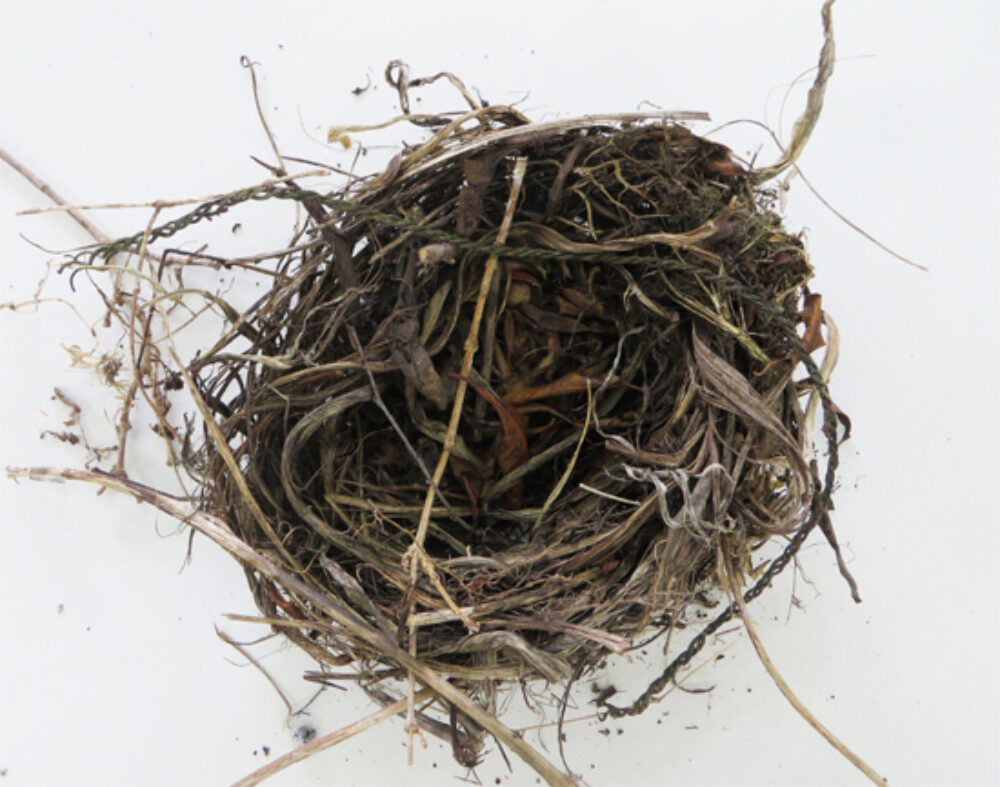
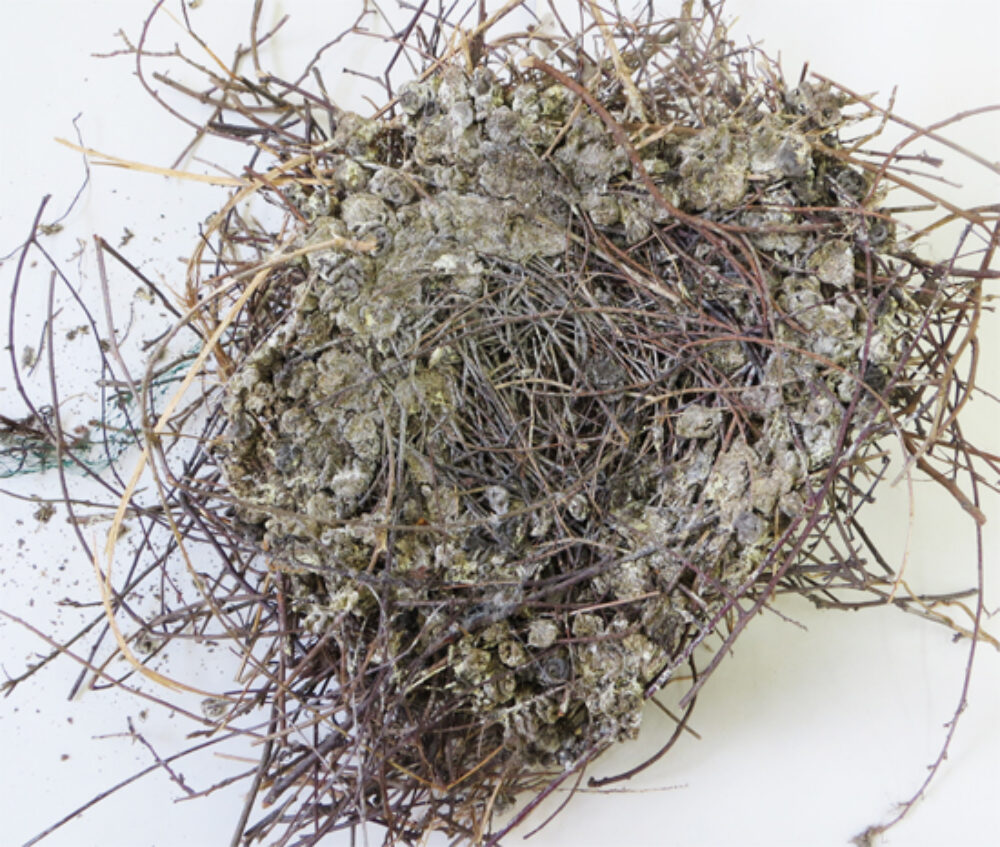
You May Also Like…
Pathway: Sculpture, Structure, Inventiveness & determination
This is featured in the ‘Sculpture, Structure, Inventiveness & Determination’ pathway
using sketchbooks to make visual notes
Find out how pupils can respond to artists work in sketchbooks
Show me what you see
Enable close looking and drawing with this exercise
Drawing Source Material: Drone Footage over Natural Landscapes
A collection of imagery and sources which you can use to prompt drawing in schools and community groups.
Please note that this page contains links to external websites and has videos from external websites embedded. At the time of creating, AccessArt checked all links to ensure content is appropriate for teachers to access. However external websites and videos are updated and that is beyond our control.
Please let us know if you find a 404 link, or if you feel content is no longer appropriate.
We strongly recommend as part of good teaching practice that teachers watch all videos and visit all websites before sharing with a class. On occasion there may be elements of a video you would prefer not to show to your class and it is the teacher’s responsibility to ensure content is appropriate. Many thanks.
This resource is free to access and is not a part of AccessArt membership.

Drone Footage Over Natural Landscape
Use the film below as source material to enable an exploration of drawing natural landscapes. You can also try to find drone footage of your own environment, or that of areas relating to projects you are covering in school.
Pause the footage at points which catch your eye and invite the children to make timed drawings – 15 minutes, 10 minutes, 5 minutes, 2 minutes or 1 minute.
Vary the drawing materials you use and work in sketchbooks or sheets of paper of different sizes and textures. You may also like to make multiple line drawings over one page – each with a different colour or line weight, to describe different pause points in the same film to capture a moving landscape.
Dixie National Forest, Utah
Howqua Hills, Australia
Reading, UK
The Netherlands
This Source Material Features in…
Pathway: Cloth, thread, paint
This is featured in the ‘Cloth, Thread, Paint’ pathway
Pathway: Mixed Media Land and city scapes
This is featured in the ‘Mixed Media Land and City Scapes’ pathway
using sketchbooks to make visual notes
Show me what you see
Drawing Source Material: Coal Mines
A collection of imagery and sources which you can use to prompt drawing in schools and community groups.
Please note that this page contains links to external websites and has videos from external websites embedded. At the time of creating, AccessArt checked all links to ensure content is appropriate for teachers to access. However external websites and videos are updated and that is beyond our control.
Please let us know if you find a 404 link, or if you feel content is no longer appropriate.
We strongly recommend as part of good teaching practice that teachers watch all videos and visit all websites before sharing with a class. On occasion there may be elements of a video you would prefer not to show to your class and it is the teacher’s responsibility to ensure content is appropriate. Many thanks.
‘In the 19th century the coal mines of Great Britain provided the primary source of energy for the industrial revolution. Coal powered the steam locomotives, ships, steam engines in mills etc. It also generated heat and light in the form of coal gas and later electricity. Coal processed into coke made blast furnace production of iron and other metals possible. Coal did much of the work then that oil and natural gas do now, including as a substitute for the growing chemical industry.’ – Working Class Museum Library
Use the film below to enable children to explore drawing coal-mines. Try to create a sense of momentum – for example you might pause the video 4 times and ask the pupils to make a 1 minute, 2 minute, 3 minute and 4 minute drawing at each pause.
Encourage close and slow looking by talking as they draw – use your voice to attract their attention to qualities of the coal-mine.
Try some different exercises-
Cover the page with charcoal, use an eraser to draw detail and capture lighter tonal areas.
Blur the image by squinting your eyes. Using the side of the charcoal, pick out the different areas of tone and loosely block them out on the paper.
Begin the video at 02.50 to avoid showing images of animal carcasses.
Miner
Click here to watch a 1950s coal-mining documentary made by the British Film Institute.
Watch the first 20 minutes to understand the processes and roles involved in coal-mining.
You May Also Like…
Pathway: An Exploration of coal mining Inspired by henry moore
Featured in the ‘An Exploration of Coal Mining’ pathway
Pathway: How Can I Use Light & Dark To Create A Sense Of Space, Inspired By The Coal Mining Drawings Of Henry Moore?
For ages 11-14, explore this pathway inspired by Henry Moore’s coal mining drawings
Show me what you see
using sketchbooks to make visual notes
Drawing Source Material: Ancient Greek Architecture
A collection of imagery and sources which you can use to prompt drawing in schools and community groups.
Please note that this page contains links to external websites and has videos from external websites embedded. At the time of creating, AccessArt checked all links to ensure content is appropriate for teachers to access. However external websites and videos are updated and that is beyond our control.
Please let us know if you find a 404 link, or if you feel content is no longer appropriate.
We strongly recommend as part of good teaching practice that teachers watch all videos and visit all websites before sharing with a class. On occasion there may be elements of a video you would prefer not to show to your class and it is the teacher’s responsibility to ensure content is appropriate. Many thanks.
This resource is free to access and is not a part of AccessArt membership.

Ancient Greek Architecture
Use the film below as source material to enable an exploration of drawing Ancient Greek architecture.
Pause the footage at points which catch your eye and invite the children to make timed drawings – 15 minutes, 10 minutes, 5 minutes, 2 minutes or 1 minute.
Vary the drawing materials you use and work in sketchbooks or sheets of paper of different sizes and textures. You may also like to make multiple line drawings over one page – each with a different colour or line weight, to describe different pause points in the same film.
Explore Ancient Corinth in 3D.
You May Also Like…
AccessArt Olympics Resources
Explore projects to celebrate the 2024 Olympics
Visual Notes
Find out how pupils can respond to artists work in sketchbooks
Show me what you see
Enable close looking and drawing with this exercise
Drawing Source Materials: Athletes in Action
A collection of imagery and sources which you can use to prompt drawing in schools and community groups.
Please note that this page contains links to external websites and has videos from external websites embedded. At the time of creating, AccessArt checked all links to ensure content is appropriate for teachers to access. However external websites and videos are updated and that is beyond our control.
Please let us know if you find a 404 link, or if you feel content is no longer appropriate.
We strongly recommend as part of good teaching practice that teachers watch all videos and visit all websites before sharing with a class. On occasion there may be elements of a video you would prefer not to show to your class and it is the teacher’s responsibility to ensure content is appropriate. Many thanks.
These resources are free to access and are not a part of AccessArt Membership.

Athletes
Use this collection of films as source material for pupils exploring the human form during sports. In the first instance you might want to pause the videos as suitable points to enable the children to carefully look at the main forms and details. Try to create a sense of momentum – for example you might pause the video 4 times and ask the pupils to make a 1 minute, 2 minute, 3 minute and 4 minute drawing at each pause.
Encourage close and slow looking by talking as they draw – use your voice to attract their attention to features of the athletes.
When pupils are more experienced, you can also try getting them to make their drawings as the videos play – making quick gestural sketches.
You May Also Like…
AccessArt Olympics Resources
Explore projects to celebrate the 2024 Olympics
Visual Notes
Find out how pupils can respond to artists work in sketchbooks
Show me what you see
Enable close looking and drawing with this exercise
Drawing Source Material: Ceremonies and Celebrations
A collection of imagery and sources which you can use to prompt drawing in schools and community groups.
Please note that this page contains links to external websites and has videos from external websites embedded. At the time of creating, AccessArt checked all links to ensure content is appropriate for teachers to access. However external websites and videos are updated and that is beyond our control.
Please let us know if you find a 404 link, or if you feel content is no longer appropriate.
We strongly recommend as part of good teaching practice that teachers watch all videos and visit all websites before sharing with a class. On occasion there may be elements of a video you would prefer not to show to your class and it is the teacher’s responsibility to ensure content is appropriate. Many thanks.
These resources are free to access and are not a part of AccessArt Membership.

Ceremonies and Celebrations
Use this collection of films as source material for pupils exploring ceremonies and celebrations. In the first instance you might want to pause the videos as suitable points to enable the children to carefully look at the main forms and details. Try to create a sense of momentum – for example you might pause the video 4 times and ask the pupils to make a 1 minute, 2 minute, 3 minute and 4 minute drawing at each pause.
Encourage close and slow looking by talking as they draw – use your voice to attract their attention to features of the ceremony.
When pupils are more experienced, you can also try getting them to make their drawings as the videos play – making quick gestural sketches.
You May Also Like…
AccessArt Olympics Resources
Explore projects to celebrate the 2024 Olympics
Visual Notes
Find out how pupils can respond to artists work in sketchbooks
Show me what you see
Enable close looking and drawing with this exercise
